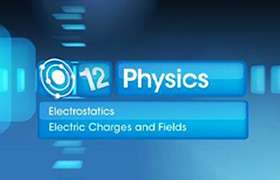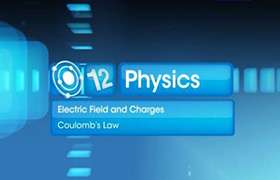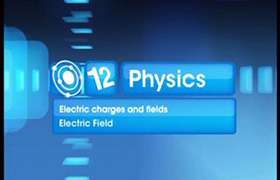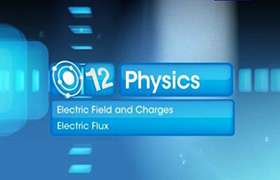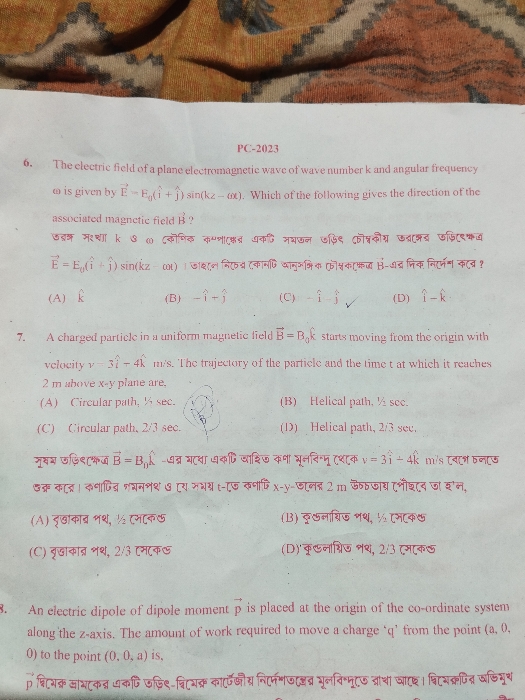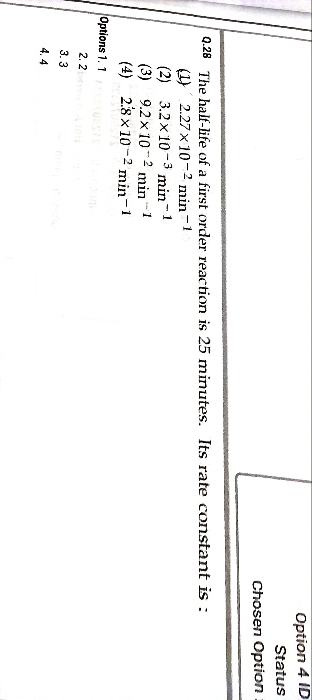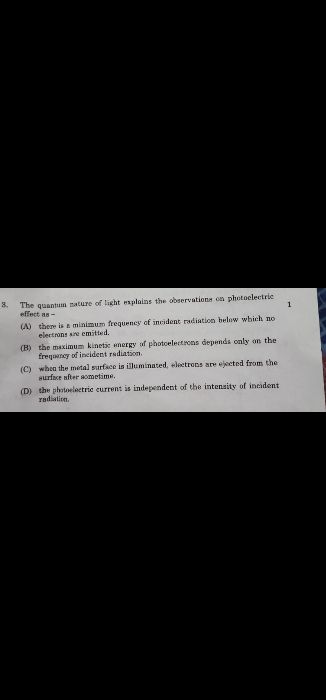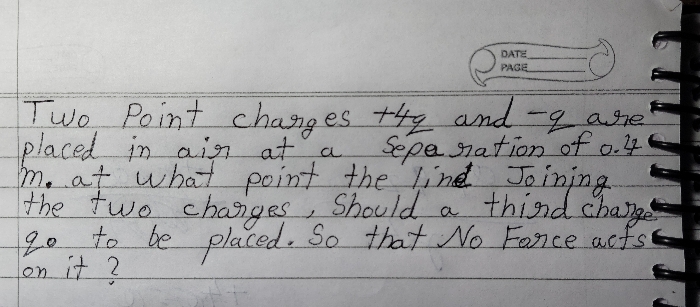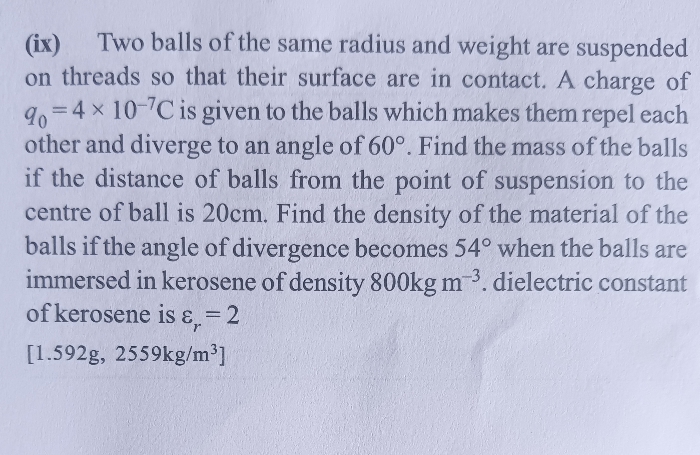CBSE Class 12-science Answered
Q - 18

Asked by majethiyarishat9566.12sdatl | 10 Nov, 2020, 09:42: PM
Energy of electron before entering electric field = (1/2) m v2 = 1000 J
where m is mass of electron and v is speed of electron before entering electric field
speed v of electron before entering electric field = { 2000 / m }1/2 = { 2000 / ( 9.1 × 10-31 ) }1/2 = 4.69 × 1016 m/s
Time to cross plate of length 2 cm = distance /speed = 0.02 / ( 4.69 × 1016 ) = 4.264 × 10-19 s
Force F acting on electron , F = e × E
where e = 1.602 × 10-19 C , is charge on electron and E = 3 V/cm = 300 V/m , intensity of electric field .
acceleration = Force / mass = ( 1.602 × 10-19 × 300 ) / ( 9.1 × 10-31 ) = 5.281 × 1013 m/s2
vertical component of velocity when electron leaves the plate , vy = a × t = 5.281 × 1013 × 4.264 × 10-19 = 2.25 × 10-5 m/s
vertical distance travelled by electron when it leaves the plates, h = (1/2) a t2 = 0.5 × 5.281 × 1013 × ( 4.264 × 10-19 )2
vertical distance travelled by electron when it leaves the plates, h = 4.8 × 10-24 m
Question (a) :-
horizontal componenet of velocity is greater than vertical componenet of velocity by order 1021
Hence velocity vector of electron when it leaves the plate has magntiude and direction of horizontal component velocity
velocity vector of electron when it leaves the plate = 4.69 × 1016  m/s
m/s
 m/s
m/sQuestion (b)
angle θ of deflection is given as , tanθ = ( vertical distance travelled by electron ) / plate length
tanθ = ( 4.8 × 10-24 ) / 0.02 = 2.4 × 10-22
tanθ is so small, we get angle of deflection = 2.4 × 10-22 rad
Question (c)
velocity is least affected and deflection is negligibly small , Hence electron almost travel along x-axis
Answered by Thiyagarajan K | 10 Nov, 2020, 11:49: PM
Concept Videos
CBSE 12-science - Physics
Asked by aishaisha091098 | 19 Apr, 2024, 04:54: PM
CBSE 12-science - Physics
Asked by dasrituparna1999 | 13 Apr, 2024, 06:56: AM
CBSE 12-science - Physics
Asked by dasrituparna1999 | 12 Apr, 2024, 09:26: PM
CBSE 12-science - Physics
Asked by mishrigupta19319 | 08 Apr, 2024, 06:28: PM
CBSE 12-science - Physics
Asked by madhav9119887644 | 07 Apr, 2024, 08:10: PM
CBSE 12-science - Physics
Asked by mishrigupta19319 | 07 Apr, 2024, 11:23: AM
CBSE 12-science - Physics
Asked by adityagalar2007 | 06 Apr, 2024, 01:06: PM
CBSE 12-science - Physics
Asked by amlanmcob | 06 Apr, 2024, 12:27: PM
CBSE 12-science - Physics
Asked by hussain221man | 05 Apr, 2024, 08:44: PM

